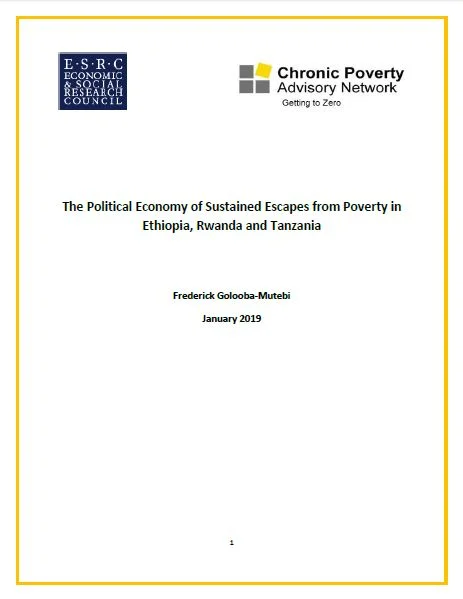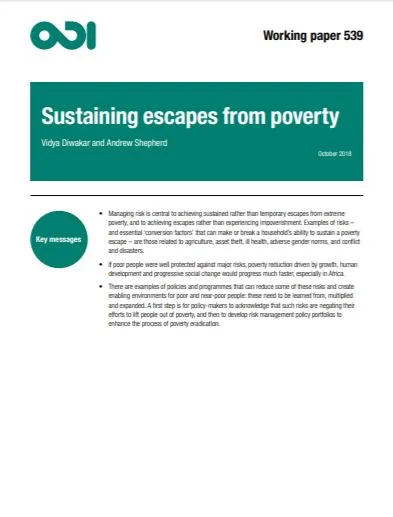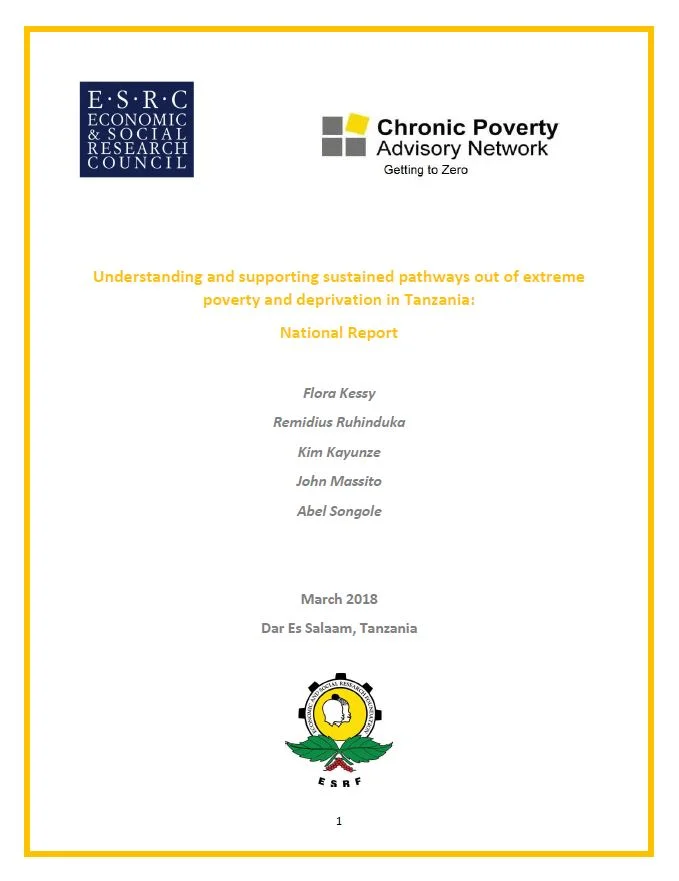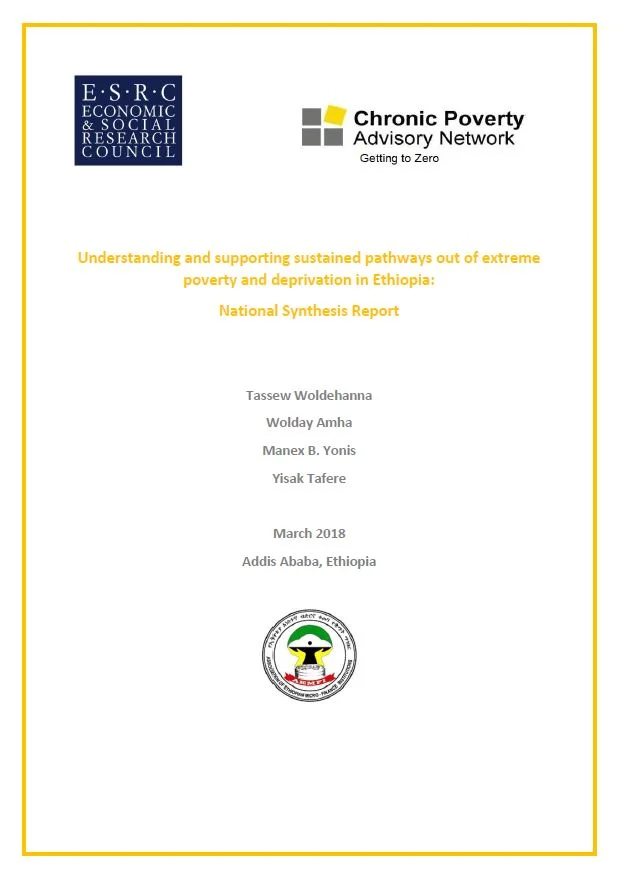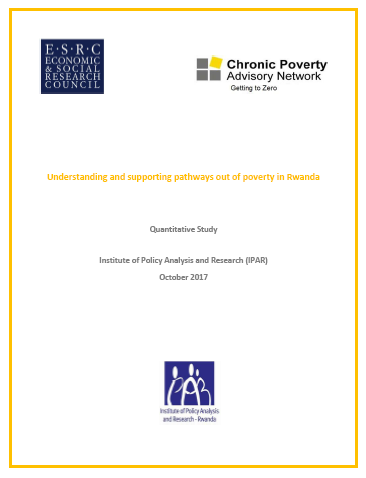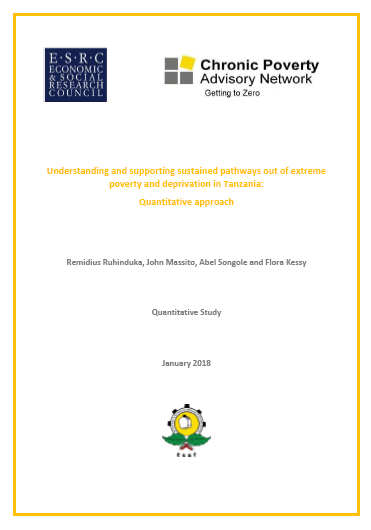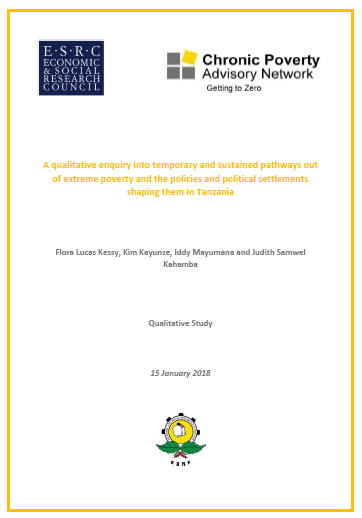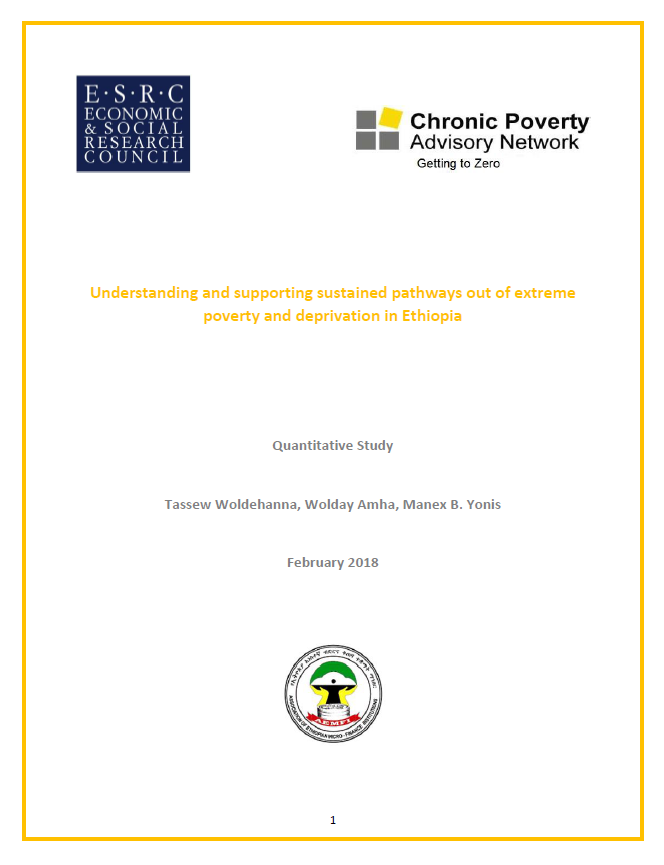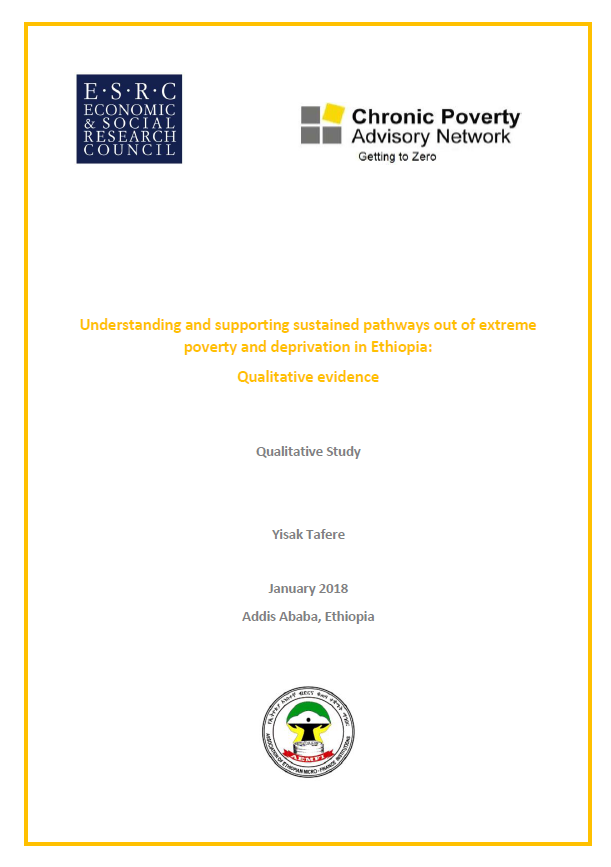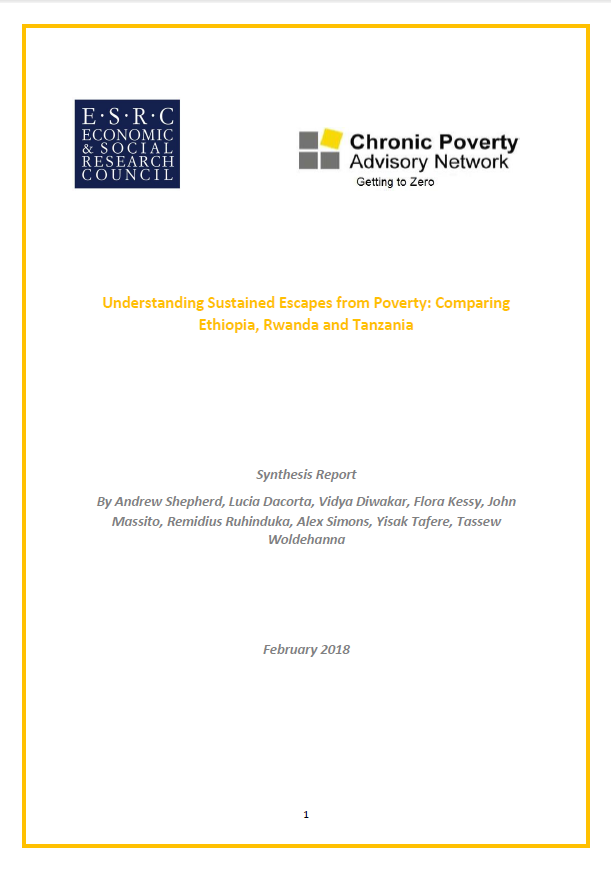Between a quarter and a half of the world’s poor population is living in persistent poverty, and there are varied patterns of mobility. In particular, people who are poor may not have been poor previously. This implies that impoverishment is a serious concern for many countries, and an issue as widespread as chronic poverty. As a result, the aim of the global post-2015 Development Agenda (the Sustainable Development Goals, SDGs) is to eradicate poverty.
Meanwhile, in Africa, since the level of extreme poverty declined from 56% in 1990 to 43% in 2012, the continent needs to shift towards ‘getting to zero’ extreme poverty. This requires revisiting the development plans, policies and programmes of African countries to ensure they focus on the poorest segment of the population.
Ethiopia has registered significant poverty reduction in the past two decades. The level of poverty reduced from 48% in 1990 to 23.5% in 2016. Households have improved their well-being during the past decade (World Bank, 2014). The government has been implementing Growth and Transformation Plans (GTPs) with the long-term objective of reaching middle-income country status in 2025. Poverty reduction has been at the centre of this transformation process. During the first five-year period (GTP I), the country achieved rapid growth (an average rate of about 10.1T%) and maintained macroeconomic stability. The economy has achieved remarkable improvements in terms of saving mobilisation, public and private sector investments, expanding and diversifying exports, infrastructure development, expanding education, health, water and sanitary services, etc. (NPC, 2016).
Despite the two-digit economic growth registered in the past 10 years, however, unemployment and extreme poverty still remain the binding challenges of the country. This study aims to increase the understanding of the factors associated with impoverishment and sustained escapes from poverty and of how policies and programmes can support these escapes in Ethiopia. The study mainly uses the three-round panel data of the Ethiopian Socioeconomic Survey (ESS). The ESS has the advantage of having been conducted for the same households across time. Moreover, given its consistency and its multidisciplinary nature, it is the most appropriate dataset in the country for studying household dynamics and understanding sustainable solutions for household well-being.
Authors: Tassew Woldehanna, Wolday Amha, Manex B. Yonis
This report is part of the project Understanding and supporting sustained pathways out of extreme poverty and deprivation.


